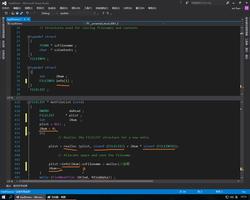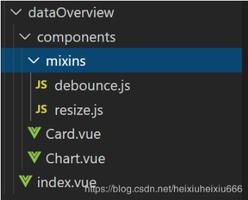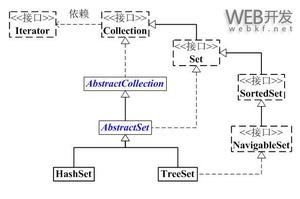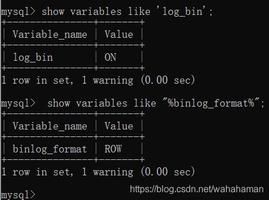关于Oracle子查询各大用法详解

子查询
一.概述:
子查询:一个select语句,作为另一条select语句语法的一部分。
select语句语法:
select distinct * | 字段 from 表名
where 查询条件
group by 分组字段 having 分组条件
order by 排序字段 asc | desc
二. 单行子查询
- 只返回一条记录
- 单行操作符
- 编写步骤,将一个需求拆分成多个子需求,依次完成每一个子需求,最后将组合子需求
--(一)单行子查询--只返回一条记录
--需求:查询2012年1月用水量大于平均值的台账记录
--1用水量平均值
select avg(ac.usenum) from t_account ac where ac.year="2012"
and ac.month="01";
--2.查询2012年1月所有用水量
select * from t_account ac
where ac.year="2012" and
ac.month="01";
--合并
select * from t_account ac
where ac.year="2012" and
ac.month="01" and ac.usenum>=(
select avg(ac.usenum) from t_account ac where ac.year="2012" and
ac.month="01"
);
三. 多行子查询
- 返回了多条记录
- 多行操作符
--(二)多行子查询
--返回了多条记录
--1查询地址编号为1 、3、4 的业主记录
select * from t_owners ow where ow.addressid in(1,3,4);
--2查询地址含有“花园”的业主的信息
--1.含有"花园"地址id
select ad.id from t_address ad where ad.name like "%花园%";
--2.整合
select * from t_owners ow where ow.addressid
in(select ad.id from t_address ad where ad.name like "%花园%");
--方式2
select * from t_owners ow ,t_address ad
where ow.addressid=ad.id and ad.name like "%花园%";
--3查询地址不含有“花园”的业主的信息
select * from t_owners ow where ow.addressid
not in(select ad.id from t_address ad where ad.name like "%花园%");
--4查询2012年台账中,使用量大于2012年3月最大使用量的台账数据
--方式1;求最大值
--1.2012年3月最大使用量
select max(ac.usenum) from t_account ac where ac.year="2012"
and ac.month="03";
--2.查询2012年台账中使用量大于13808
select * from t_account ac where ac.year="2012"
and ac.usenum>13808;
--整合
select * from t_account ac where ac.year="2012"
and ac.usenum>(select max(ac.usenum) from t_account ac where ac.year="2012"
and ac.month="03");
--方式2;使用all运算符
--1.求2012年3月所有使用量
select ac.usenum from t_account ac where ac.year="2012"
and ac.month="03";
--2.查询2012年台账大于3月份所有使用量
select * from t_account ac where ac.year="2012"
and ac.usenum >all(13808,13390);
--3整合
select * from t_account ac where ac.year="2012"
and ac.usenum >all(select ac.usenum from t_account ac where ac.year="2012"
and ac.month="03");
四. 嵌套子查询
- 嵌套子查询:在子查询中再次嵌入子查询
--(三)嵌套子查询
----嵌套子查询:在子查询中再次嵌入子查询
--查询在海淀区的小区名字中含有花园的业主记录
--1.查询区域id,名称为"海淀"
select a.id from t_area a where a.name="海淀";
--2 查询地址,条件,名称含"花园"和区域id
select ad.id from t_address ad
where ad.name like "%花园%" and
ad.areaid=(select a.id from t_area a where a.name="海淀");
--3 查询业主,条件;一组地址id
select * from t_owners ow where
ow.addressid=(select ad.id from t_address ad
where ad.name like "%花园%" and
ad.areaid=(1));
--4.组合
select * from t_owners ow where
ow.addressid=(select ad.id from t_address ad
where ad.name like "%花园%" and
ad.areaid=(select a.id from t_area a where a.name="海淀"));
五.标量子查询
标量子查询:子查询的语句执行的结果直接作为主查询的结果显示
--查询台账表中的用户年用水量的总和 以及 年平均用水量
--1.查询用水量总和
select sum(ac.usenum) from t_account ac;
--2.查询用水量平均值
select avg(ac.usenum) from t_account ac;
--3.将两个不相关的数据,使用虚表dual组合在一起
select
(select sum(ac.usenum)from t_account ac) as 年用水量的总和,
(select avg(ac.usenum) from t_account ac)as 年平均用水量
from dual;
六.相关子查询
- 相关子查询:子查询依赖外面的主查询的结果
--查询显示业主编号,业主名称、地址和业主类型
select ow.id,ow.name,ad.name,ot.name
from t_owners ow ,t_address ad,t_ownertype ot
where ow.addressid=ad.id
and ow.ownertypeid=ot.id;
--方式2;相关查询
select ow.id as 业主编号,ow.name as 业主名称,
(select ad.name from t_address ad where ad.id=ow.addressid) as 地址,
(select ot.name from t_ownertype ot where ot.id=ow.ownertypeid) as 业主类型
from t_owners ow;
--查询显示业主编号、业主名称、地址、所属区域、业主分类
--方式一
select ow.id,ow.name,ad.name,ar.name,ot.name from
t_owners ow ,t_address ad, t_area ar,t_ownertype ot
where ow.addressid=ad.id and ad.areaid=ar.id
and ow.ownertypeid=ot.id;
--方式二;相关查询
select ow.id as 业主编号,ow.name as 业主名称,
(select ad.name from t_address ad where ad.id=ow.addressid) as 地址,
(select ar.name from t_area ar, t_address ad where ar.id=ad.id and ad.id=ow.addressid)as 所属区域,
(select ot.name from t_ownertype ot where ot.id=ow.ownertypeid) as 业主类型
from t_owners ow ;
今天就先到这里了,让我们下篇见噢!!!
看完恭喜你,又知道了一点点!!!
你知道的越多,不知道的越多!
~感谢志同道合的你阅读, 你的支持是我学习的最大动力 ! 加油 ,陌生人一起努力,共勉!!
以上是 关于Oracle子查询各大用法详解 的全部内容, 来源链接: utcz.com/z/533909.html








